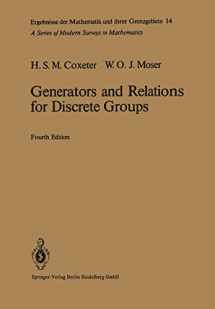
Generators and Relations for Discrete Groups (Ergebnisse der Mathematik und ihrer Grenzgebiete. 2. Folge, 14)
Book details
Summary
Description
When we began to consider the scope of this book, we envisaged a catalogue supplying at least one abstract definition for any finitely generated group that the reader might propose. But we soon realized that more or less arbitrary restrictions are necessary, because interesting groups are so numerous. For permutation groups of degree 8 or less (i.e.' .subgroups of es), the reader cannot do better than consult the tables of JosEPHINE BuRNS (1915), while keeping an eye open for misprints. Our own tables (on pages 134-142) deal with groups of low order, finite and infinite groups of congruent transformations, symmetric and alternating groups, linear fractional groups, and groups generated by reflections in real Euclidean space of any number of dimensions. The best substitute for a more extensive catalogue is the description (in Chapter 2) of a method whereby the reader can easily work out his own abstract definition for almost any given finite group. This method is sufficiently mechanical for the use of an electronic computer.


We would LOVE it if you could help us and other readers by reviewing the book
Book review



